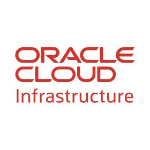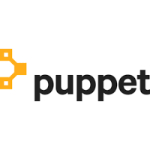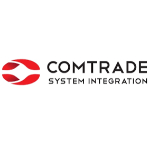List of Best Infrastructure Software
Showing 10 of 16 productsOracle Cloud Infrastructure is a and versatile platform designed to deliver high-performance cloud services for businesses of all sizes. From storage and networking to compute and security, Oracle Cloud Infrastructure offers a wide range of solutions...Read Oracle Cloud Infrastructure Reviews
Alepo is a leading provider of robust and innovative software solutions for communications and digital services. With a rich history of serving clients around the globe, Alepo brings a wealth of experience and expertise to the table. Its powerful sof...Read Alepo Reviews
Docusnap is a software that simplifies IT documentation and network inventory management. With a user-friendly interface features, Docusnap streamlines processes and provides robust insights into your IT landscape. Take the guesswork out of IT manage...Read Docusnap Reviews
Squadcast, is a solution for streamlined incident management. Built with efficiency and ease of use in mind, Squadcast simplifies the handling of technical issues, ensuring swift resolution and minimizing downtime. With its powerful features and user...Read Squadcast Reviews
Puppet, a powerful is a tool for automating the management of your IT infrastructure. With its user-friendly interface and vast array of features, Puppet simplifies the task of configuring and deploying applications, making it an essential software f...Read Puppet Reviews
Tarantula is a and versatile software designed to enhance your productivity and streamline your tasks. With its array of innovative features and user-friendly interface, Tarantula is a tool for professionals and individuals seeking efficient and effo...Read Tarantula Reviews
BlueData EPIC is a software designed to transform the way organizations manage and deploy their Big Data applications. With its user-friendly interface capabilities, businesses can easily scale and optimize their data infrastructure to drive innovati...Read BlueData EPIC Reviews
XIUS the innovative software solution designed to streamline your business operations and drive success. With XIUS, say goodbye to tedious tasks and hello to efficiency and profitability. From its intuitive interface to its powerful features, XIUS is...Read XIUS Reviews
Comtrade your one-stop solution for efficient and streamlined trade management. With a focus on simplifying complex processes, Comtrade offers a user-friendly interface that cater to your trading needs. From seamless data management to insightful ana...Read Comtrade Reviews
- What Is Infrastructure Software?
- Top Reasons Why Businesses Need Infrastructure Software?
- What Are the Top Key Features of Infrastructure Software?
- What Are the Top Benefits of Infrastructure Software?
- What Are the Steps to Choose the Right Infrastructure Software?
- What Are the Types of Infrastructure Software for Different Industries?
- What Are the Technology Trends for Best Infrastructure Software?
- What Are the Deployment Options for Infrastructure Software?
What Is Infrastructure Software?
Infrastructure software is a type of software that is used to maintain, construct, and administer systems and services inside an organization's information technology architecture. This software is in charge of running the "back end" of a company's IT activities.
It is a set of tools and services used to manage a company's essential processes, such as data storage, system management, network security, and server hosting. Organizations typically utilize infrastructure software to help store and preserve sensitive data, monitor equipment and services, automate IT activities, and store backups.
This software is especially beneficial for larger firms that run many platforms. Infrastructure software can help to improve efficiency and productivity in addition to providing protection and management.
An enterprise system, which is a sort of integrated system with many software components that supply services and operate within a firm, is the most frequent type of infrastructure management software. These components are frequently integrated and customized to improve redundant activities, simplify processes, and offer secure system user access.
In summary, infrastructure software is a set of tools and services used to maintain, construct, and administer the systems and services that comprise an organization's IT architecture. It aids in the storage and protection of data, the automation of procedures, and the improvement of efficiency, all of which contribute to the smooth execution of activities.
Top Reasons Why Businesses Need Infrastructure Software?
1) Infrastructure software aids in the automation of tasks, lowering the time and effort required to execute complicated processes.
2) Infrastructure management software can handle massive amounts of data, allowing businesses to manage and analyze crucial data.
3) Infrastructure software is required for the secure storage and retrieval of sensitive or secret data.
4) Infrastructure management systems improve operational efficiency by making better use of time and resources.
5) Infrastructure management software assists organizations in increasing revenue by tracking expenditures, enhancing customer service, and controlling supply chain activities.
6) Infrastructure software can assist cut costs by automating activities like provisioning, deployment, and maintenance.
7) Software infrastructure management may give businesses with information about performance parameters including consumption, capacity, and availability.
8) Infrastructure management software can boost dependability and uptime, ensuring that services are available when they are required.
9) Infrastructure software can assure continuity by allowing for service and system scalability and redundancy.
10) Infrastructure management systems can provide useful insights to enterprises, allowing them to make more educated decisions.
11) Infrastructure software can help firms increase security by allowing them to monitor and limit access to sensitive data.
12) Software infrastructure management can help to simplify the management of networks, servers, and applications.
13) Infrastructure management software can assist with the integration of many systems and the interchange of data.
14) Infrastructure software can aid in the management of disparate hardware and software systems.
15) Infrastructure software can help firms create agile systems that are more adaptable to today's fast changing environment.
What Are the Top Key Features of Infrastructure Software?
1. Automated Provisioning: Automated provisioning enables enterprises to efficiently build and oversee extensive infrastructure environments expeditiously using a simplified process.
2. Monitoring: Infrastructure software plays a crucial role in enabling administrators to effectively monitor and assess the performance and overall well-being of the systems within their network.
3. Security: Cloud infrastructure software offers a range of security features, including but not limited to authentication and authorization mechanisms, access control protocols, and malware defense mechanisms.
4. High Availability: Infrastructure management systems play a crucial role in ensuring the continuous availability of essential services to users through the provision of redundant components and regularly updated backups.
5. Disaster Recovery: Infrastructure management software plays a crucial role in assisting firms in formulating strategies to effectively address disturbances and mitigate their adverse consequences.
6. Performance Optimization: Infrastructure software empowers administrators to enhance the efficiency of their systems through the processes of tuning, scaling, and maximizing resources.
7. Automation: Infrastructure software plays a crucial role in streamlining and automating monotonous and repetitive operations, hence enabling firms to optimize their time use and enhance overall productivity.
8. Configuration Management: Software infrastructure management plays a crucial role in enabling administrators to effectively monitor and manage the configuration status of their systems.
9. Collaboration: Infrastructure software facilitates efficient collaboration among administrators and other IT employees, hence enabling the timely completion of duties and prompt resolution of issues.
10. Self-Service: Infrastructure management software enables users to efficiently deploy and oversee virtual machines and services, requiring minimal intervention from administrators.
What Are the Top Benefits of Infrastructure Software?
The top benefits of infrastructure software include:
• Improved efficiency: Infrastructure software plays a pivotal role in streamlining and automating monotonous and iterative operations, so enabling employees to allocate their valuable time and effort towards more significant undertakings.
This has the potential to enhance the overall efficiency of the company.
• Reduced costs: Infrastructure software has the potential to decrease total expenses by enhancing process efficiency.
• Increased scalability: Infrastructure software plays a crucial role in facilitating the rapid expansion of an organization's solutions to effectively accommodate an increasing number of users.
• Higher security: The utilization of cloud-based infrastructure solutions has the potential to mitigate the occurrence of data breaches and other security events.
• Improved customer experience: The utilization of automated procedures has the potential to enhance customer experience through the facilitation of a cohesive and uninterrupted interaction across several channels.
• Enhanced collaboration: Infrastructure solutions play a pivotal role in fostering effective communication and collaboration among teams, hence enhancing overall productivity.
• Ease of deployment: Infrastructure solutions can be readily implemented, enabling firms to promptly establish operations with the most recent functionalities.
What Are the Steps to Choose the Right Infrastructure Software?
1. Gather the requirements: Firstly, cloud infrastructure software is imperative to allocate sufficient time for a comprehensive analysis of your business requirements and objectives. This task involves the identification of the distinct requirements and business objectives for both the present and future stages of the company.
2. Research the available options: Once the requirements of your firm have been identified, it is essential to do research on the infrastructure software options available in the market.
This research should involve analyzing the various features offered by different software options and ensuring that they align with the specific demands of your organization.
3. Set the budget: After the identification of needs and thorough research on the available solutions, it is advisable to allocate a budget for the software. Determine an appropriate budget by considering the desired number of features and the financial resources available for expenditure.
4. Test and evaluate the software: After making a software selection, it is advisable to do a practical evaluation of the chosen software. Conduct a trial period with the program and thereafter examine the outcomes, assessing its potential to enhance the workflow and productivity inside your firm.
5. Monitor performance and maintenance: Continual monitoring and regular upgrades are crucial post-selection of software for infrastructure, as they contribute to enhanced performance. Developing a comprehensive strategy for the systematic upkeep of the software in order to uphold its efficiency.
What Are the Types of Infrastructure Software for Different Industries?
There are many types of infrastructure software for different industries, and some of the most commonly used ones are:
1. Server software: Server software facilitates the establishment of connections and facilitates the exchange of data among networked machines. Some examples of software systems that can be mentioned are Windows Server, Microsoft Exchange, and IBM AIX.
2. Network security software: Network security software is employed to safeguard the integrity of a network through the surveillance of unauthorized access and malevolent behavior. Some examples of antivirus software and firewall solutions often used are Norton Antivirus, McAfee Total Protection, and Check Point Firewall.
3. Database software: Database software offers a methodical framework for the arrangement and retention of data. Some examples of database management systems are Oracle Database, Microsoft SQL Server, and MySQL.
4. Storage software: Storage software is utilized for the purpose of storing and effectively managing data. Two examples of storage solutions commonly used in computer networks are network attached storage (NAS) and storage area networks (SANs).
5. Cloud computing software: Cloud computing software enables users to access and utilize hardware and software resources, as well as store data, through internet-based platforms. Some notable examples of cloud computing platforms are Amazon Web Services, Microsoft Azure, and Google Cloud Platform.
6. Business intelligence software: firm intelligence software is employed for the purpose of scrutinizing data and deriving informed insights that are pertinent to the operations of a firm. Some examples of business intelligence software tools are IBM Cognos, Microsoft Power BI, and QlikView.
7. DevOps software: DevOps software is employed for the purpose of effectively overseeing and automating the processes involved in the development and deployment of applications. Some examples of tools that can be used for software deployment and configuration management are IBM UrbanCode, Chef, and Puppet.
What Are the Technology Trends for Best Infrastructure Software?
The primary technological trends that are expected to shape the landscape of infrastructure software in 2020 encompass automation, security, containers, analytics, and cloud computing.
The implementation of automation inside businesses facilitates the enhancement of operational efficiency by expediting processes, improving output quality, and mitigating the occurrence of errors and the need for manual labor. Security measures enable enterprises to safeguard their infrastructure against potential threats and mitigate the risk of data breaches.
Containers offer a practical and efficient approach for the deployment of applications and microservices, characterized by their minimal resource consumption, ease of mobility, and enhanced security measures. Analytics facilitate the monitoring and acquisition of valuable insights pertaining to an organization's infrastructure.
Finally, cloud infrastructure software offers enterprises the opportunity to utilize services that are both highly scalable and cost-effective.
What Are the Deployment Options for Infrastructure Software?
When deploying infrastructure software, organizations have a number of options depending on their specific requirements.
1. On-premises: Organizations have the capability to implement the program directly on their internal servers and networks. This feature enables enhanced management of security, performance, and various other aspects.
2. Cloud: The deployment of cloud infrastructure software on cloud platforms, such as Microsoft Azure or Amazon Web Services, offers a versatile scalability feature that may be readily adapted to accommodate evolving user requirements.
3. Hybrid: The integration of on-premises and cloud deployments allows enterprises to leverage their current infrastructure while harnessing the benefits of cloud technologies.
4. Edge Computing: This strategy facilitates the proximity of processing and storage resources to the user, hence enabling real-time analysis and enhancing performance.
5. IoT: The implementation of infrastructure software is being driven by the growing adoption of Internet of Things (IoT) solutions, which facilitate the connection and management of physical equipment.
Typically, companies are required to assess their specific needs and objectives, followed by selecting the most suitable deployment method. For the majority of enterprises, it is likely that a combination of the aforementioned choices will be employed.










